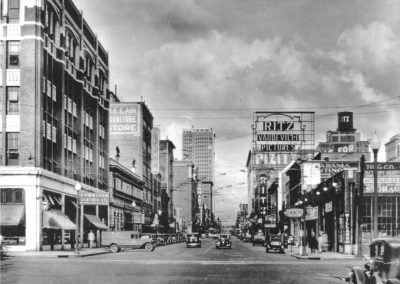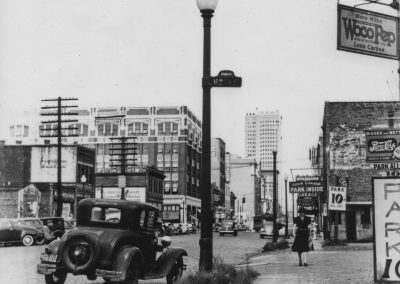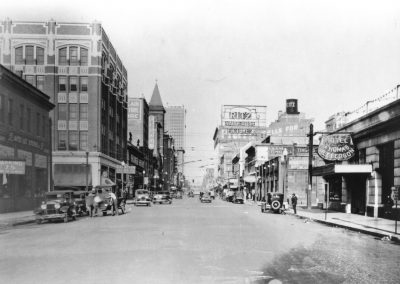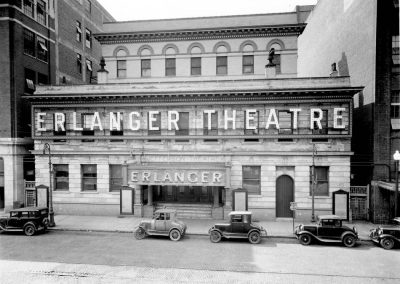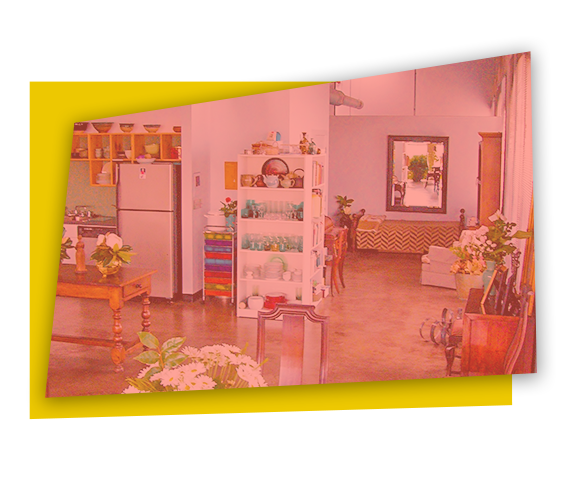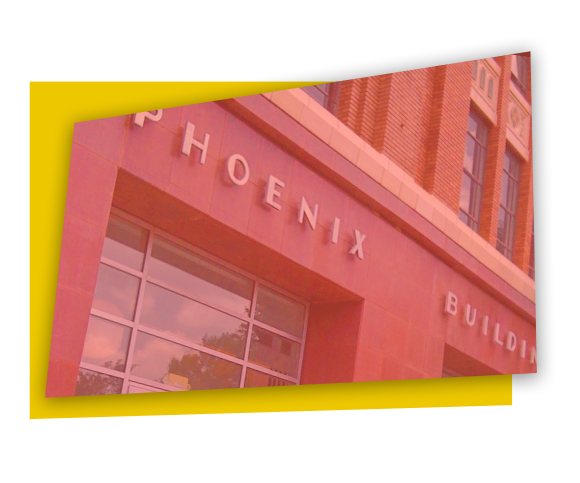
Birmingham became the region’s leading industrial city, evolving from a rough and tumble “boom town” of muddy streets, saloons, fistfights, and shootouts to a civilized city with paved streets, gaslights, telephone service, and a public school system.
In 1926, at the corner of 17th Street and 2nd Avenue North, the Phoenix Building replaced a horse carriage service, which replaced the residences before them. The days of high society going out to a traveling stage show were eventually eclipsed by the rise of first vaudeville and then motion pictures. Built as a modern warehouse with storefronts on the street, the Phoenix Building was next door to the Jefferson Theater, a vaudeville house, named after the famed stage actor of the day, Joseph Jefferson.
At some point the Jefferson became the local outlet for the Klaus-Erlanger vaudeville circuit, and the name was changed to the Erlanger Theatre for a while. That era came to a close as well, and the rotting old Jefferson building was razed in the summer of 1946 to make way for a parking lot, which in turn made way for an addition to the Phoenix Building.
In 1948, the owners of the Phoenix Building signed a lease for a new tenant—purportedly the longest ever in Birmingham, Alabama—with Southern Bell Company. As part of the lease agreement, the Phoenix Building was doubled in size.
When it reopened in 1950, the Phoenix Building had 168,000 square feet on six floors and 340 feet of terra cotta decorations along 2nd Avenue and 17th Street North.
In 2004, Metropolitan LLC commenced a massive renovation to bring the Phoenix Building back to life—creating 74 lofts with an underground parking garage and restoring the terra cotta façade to its original splendor. The project was the first of its kind in Alabama to utilize a combination of affordable and historic tax credits that combined Federal, State, and City programs together on one community.
Birmingham became the region’s leading industrial city, evolving from a rough and tumble “boom town” of muddy streets, saloons, fistfights, and shootouts to a civilized city with paved streets, gaslights, telephone service, and a public school system.
In 1926, at the corner of 17th Street and 2nd Avenue North, the Phoenix Building replaced a horse carriage service, which replaced the residences before them. The days of high society going out to a traveling stage show were eventually eclipsed by the rise of first vaudeville and then motion pictures. Built as a modern warehouse with storefronts on the street, the Phoenix Building was next door to the Jefferson Theater, a vaudeville house, named after the famed stage actor of the day, Joseph Jefferson.
At some point the Jefferson became the local outlet for the Klaus-Erlanger vaudeville circuit, and the name was changed to the Erlanger Theatre for a while. That era came to a close as well, and the rotting old Jefferson building was razed in the summer of 1946 to make way for a parking lot, which in turn made way for an addition to the Phoenix Building.
In 1948, the owners of the Phoenix Building signed a lease for a new tenant—purportedly the longest ever in Birmingham, Alabama—with Southern Bell Company. As part of the lease agreement, the Phoenix Building was doubled in size.
When it reopened in 1950, the Phoenix Building had 168,000 square feet on six floors and 340 feet of terra cotta decorations along 2nd Avenue and 17th Street North.
In 2004, Metropolitan LLC commenced a massive renovation to bring the Phoenix Building back to life—creating 74 lofts with an underground parking garage and restoring the terra cotta façade to its original splendor. The project was the first of its kind in Alabama to utilize a combination of affordable and historic tax credits that combined Federal, State, and City programs together on one community.
